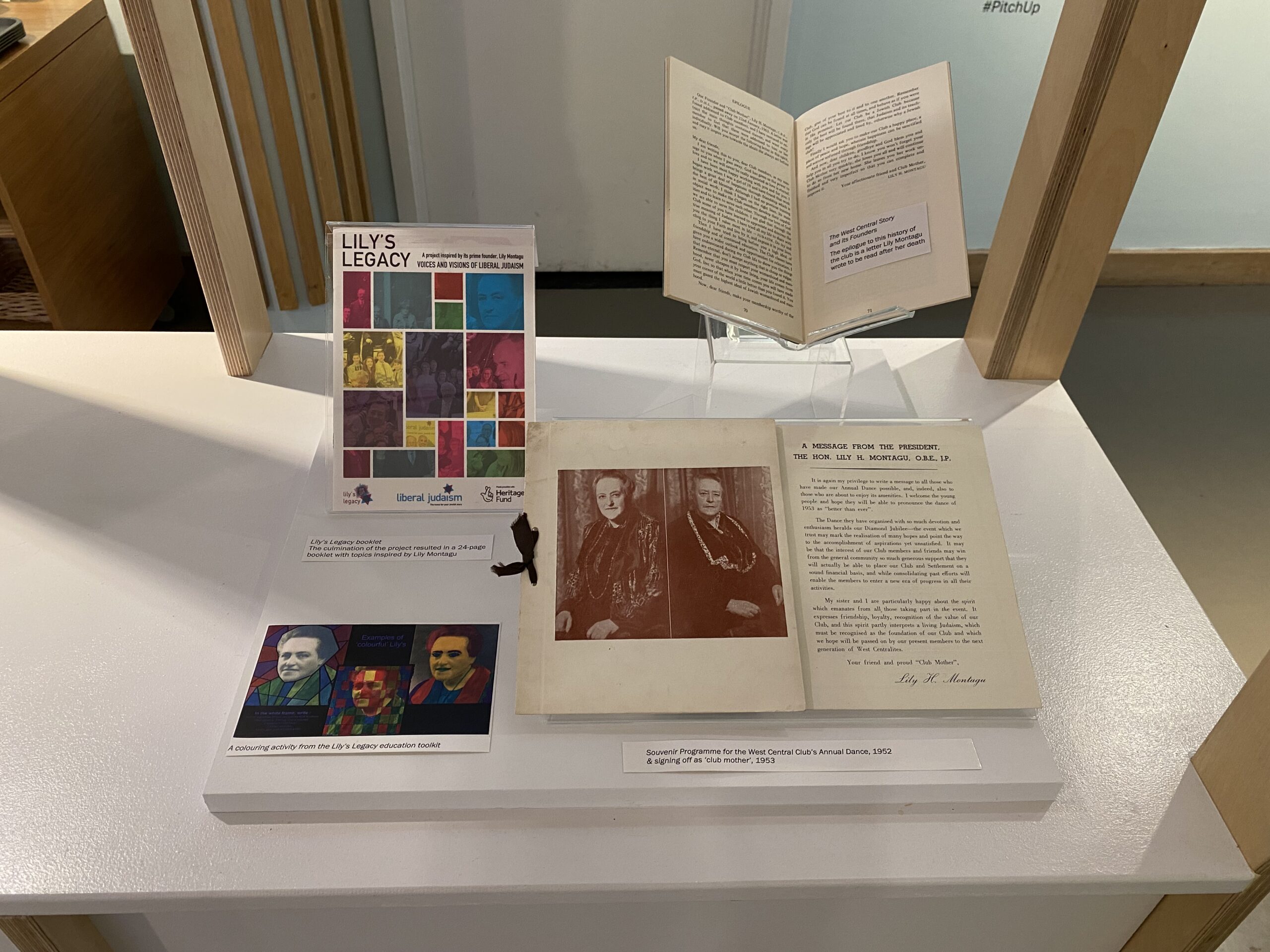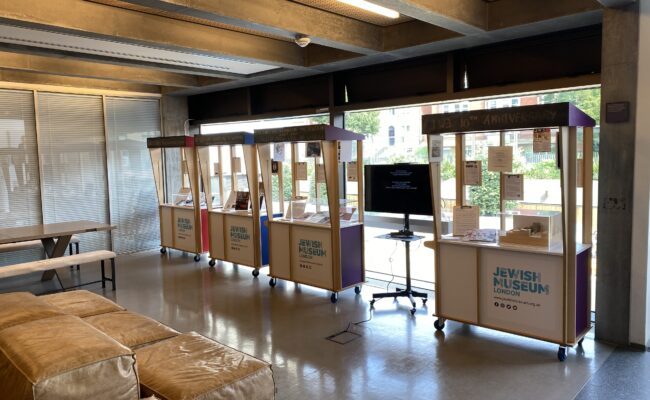Lily’s Legacy: A conversation between Adam Corsini, Jewish Museum London & Shaan Knan, Lily’s Legacy Project

Museum: Let’s start with you telling us a little bit about Lily’s legacy project.
Knan: Lily’s Legacy, – the full title is The radical history and heritage of liberal Judaism in Britain- It is an oral history project hosted by Liberal Judaism UK and supported by the National Lottery Heritage Fund. The project examines how Liberal Judaism embodies the vision of Lily Montagu, the prime founder of the Movement. It features the voices, visions, memories and mementos of Liberal Judaism through the 20th and 21st century. It contains thoughts for the future, collecting over 100 oral histories, memorabilia items, documents and books, that capture this rich history from across our 40 communities in the in the UK. Essentially, it is a reflection of the roots of Liberal Judaism, and how that vision is embodied today.
Museum: Was there anything unexpected that came out of the project?
Knan: I think what was really unexpected was that so many people we talked to, of course the older generation, knew Lily Montagu, some even personally. On the other hand, the younger ones didn’t really know much about the founders, Lily Montagu, or the history of Liberal Judaism. However, they were really interested. actually, to find out more about the founders and reflecting on the values of Liberal Judaism today. So I think that was surprising but also comforting to hear that people do actually want to know about this heritage, and they want to know about it in many creative ways.
MUSEUM: What do you think Lily would make of her legacy?
Well, we asked ourselves that, too. I do think she would support today’s work that we do on inclusion, diversity, equity; I think she would support most things. And interestingly, some of the things that we do, 21st century ideas, is what Lily Montagu did back then. For example, lesser known stories, that she saved refugees from Germany. She was instrumental in organising some of the Kindertransports also – and that’s something that a lot of Jews, especially progressive Jews and liberal Jews, fight for today: to get refugees into the UK and to change legislation around that. I think Lily would have definitely joined in with such causes, and would have certainly be supportive.
Selecting an object
Museum: Let’s talk a little bit about the objects that you’d like to display? What have you chosen and why?
Knan: The Lily’s Legacy booklet is an exhibition brochure that features voices and visions of Liberal Judaism. It’s available also as a wonderful multimedia online exhibition. Inside you’ll find a bit of the history of Liberal Judaism and Lily Montagu’s work. It features memories of Montagu, taken from the oral histories that we collected, how people remember her and the other pioneers, such as Rabbi Rayner. Then there’s material concerning Lily’s Liberal Judaism values, e.g. gender equality, modern rituals & worship; things about mixed faith, conversions, inclusivity and social justice. The booklet/exhibition gives a really brilliant overview of not only what the project is about, but also people’s experiences and thoughts. It’s all about connecting the past to the present and thus the future.
Quite a few of the images of Lily can be found in the Jewish Museum’s Archives. In the Education toolkit there’s a wonderful exercise for young people to look at the portrait of Lily Montagu; what do we see in her face? She may look like a very serious woman, but there’s always this very warm smile as well. How can we interpret this in a 21st century way? What does it say about women of her time? I mean, Lily was a pioneer and did things that women (who were just about barely able to vote) would ‘normally’ not have done so easily, especially founding of a progressive faith movement. And I think just a portrait on its own can really set off a lot of reflection and thinking.
Museum: Moving on to the educational toolkit, how does that relate to the work you’re trying to do?
Knan: It’s so important for young people to learn about this history; the history of their own community and the history of the Liberal movement. These stories can easily get lost. It’s very important to know where we come from, to actually figure out where we’re going. The Young people that we consulted as part of the project – not only a Jewish or Liberal – they all wanted to know more about Lily, and how this faith movement was primarily founded by a woman. And they’re fascinated when they realise the lack of women’s rights in those days. It’s important to learn about the characters and the history of the movement and use it in a contemporary way. So we use some of the oral history materials and the photos for young people to access history and interpret history creatively; that’s even more important – the interpretation of this history within their own framework, their own community.
This particular part of the toolkit may perhaps appear to be just a simple colouring exercise, but it can show how young people would like to interpret historic figures like Lily Montagu: some children maybe thought she needed a bit more colour, you know, more of a smile J Some people put her in the rainbow flags, because maybe they thought she surely would have been an LGBT+ ally today. It’s indeed very interesting, how just a plain colouring exercise can show young people’s response to history.
The letter from the History of the West Central Club is really touching. It shows the care that she had for everyone, not just the club, but people in general. And she signs off as the club mother, which she was of course, as she co-founded the West Central Jewish girls club. That was a wonderful endeavour, because obviously she did that to support young girls, their socially, intellectually, spiritually, and educational development. And she was very devoted to the girls of the club so she was kind of the mother in many ways.
It very much demonstrates her values; I think it shows again how much she cared in general, to write such a letter to say goodbye and thank you. Lily herself says that in some of the other materials that we’ve chosen; it’s about the value in things not just about Judaism. Lily obviously saw a lot of value in faith and Judaism. It’s one of her core principles and the key aspects in her life. But I wouldn’t see it in a bigoted way. Actually, I see it more in sort of ethical value way, the care and the kindness. This letter really reflects that.
—————————————————————————–
For more information, visit: www.lilyslegacyproject.com
